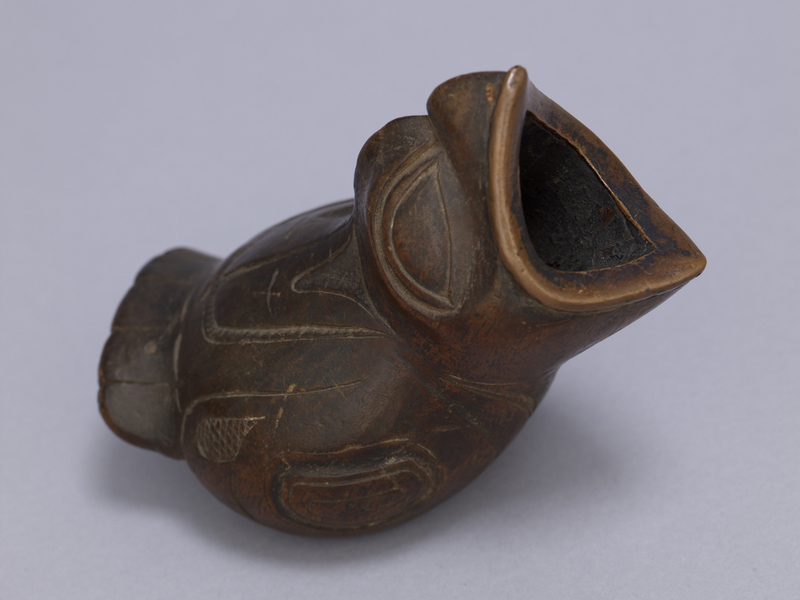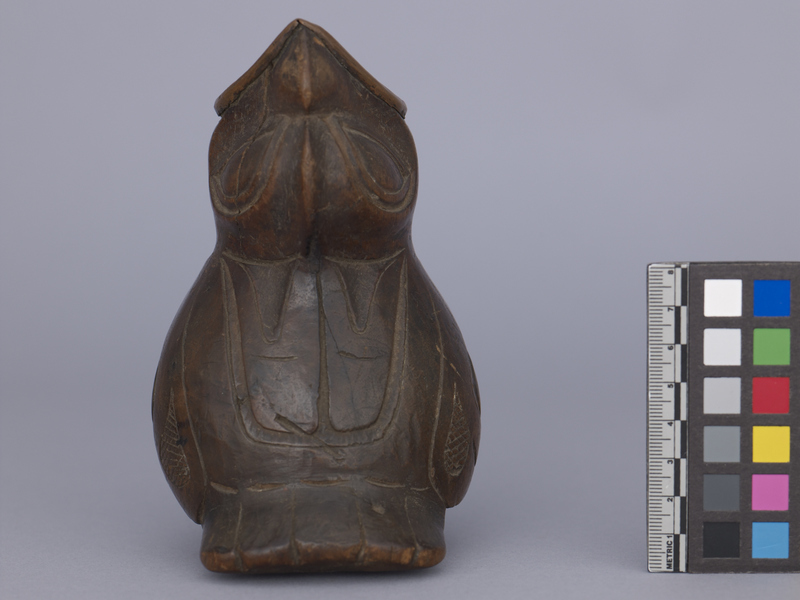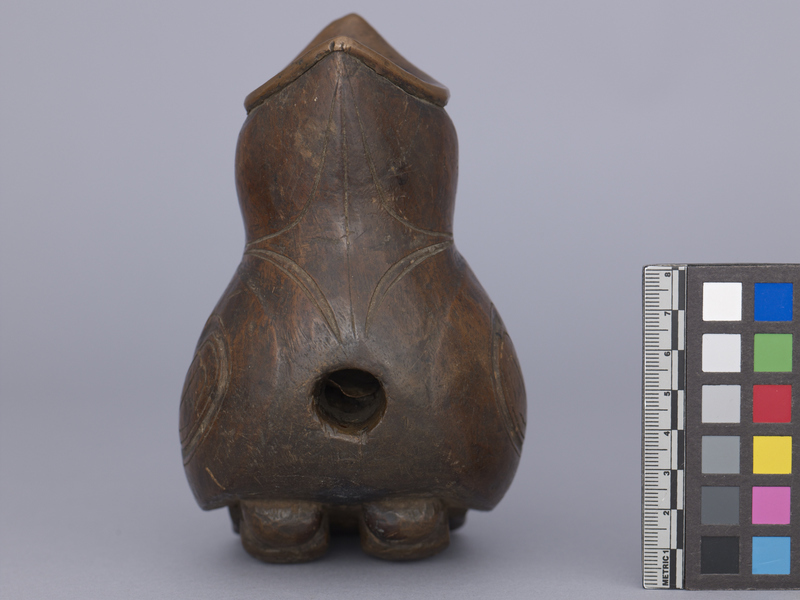Pipe Item Number: 3260/34 from the MOA: University of British Columbia




Description
Pipe bowl in the shape of a baby bird with its mouth open wide. The mouth is rimmed with copper. The stem hole is in the bird's breast. Pipe stem is missing.
History Of Use
When Europeans introduced pipes and commercial tobacco to the peoples of the northern coast during the maritime fur trade, in the late 1700s, smoking soon took the place of sucking tobacco as part of ceremonial activities. Prior to such contact, the Haida and Tlingit cultivated a now-extinct, tobacco-like plant which they dried, ground up, mixed with lime from burnt clam or abalone shells, and formed into pellets with spruce gum for chewing or holding in the mouth. With trade tobacco newly available to the Tlingit, “the pipe came into existence, and the smoking feast became an important ceremony after cremation, and at other commemorative ceremonies for the dead”. On this pipe, sheet copper has been carefully wrapped around the edge of the bird’s open mouth and lines the bowl where the tobacco would have been burned. The pipe stem, now missing, would have connected into the bowl through a hole in the bird’s chest.
Iconographic Meaning
Possibility that pipe was carved to emulate a hungry baby bird as a metaphor for the smoker's insatiable craving for tobacco.
Item History
- Made in Alaska, USA between 1840 and 1860
- Owned by Elspeth McConnell before August 12, 2017
- Received from Elspeth McConnell (Donor) on August 12, 2017
What
- Name
- Pipe
- Identification Number
- 3260/34
- Type of Item
- pipe
- Material
- walnut wood and copper metal
- Overall
- height 15.0 cm, width 9.0 cm, depth 13.0 cm
Who
- Culture
- Tlingit
- Previous Owner
- Elspeth McConnell
- Received from
- Elspeth McConnell (Donor)
Where
- Holding Institution
- MOA: University of British Columbia
- Made in
- Alaska, USA
When
- Creation Date
- between 1840 and 1860
- Ownership Date
- before August 12, 2017
- Acquisition Date
- on August 12, 2017
Other
- Condition
- good
- Accession Number
- 3260/0034